
How to Use MQ-9 SENSOR COMBUSTIBLE GAS: Examples, Pinouts, and Specs
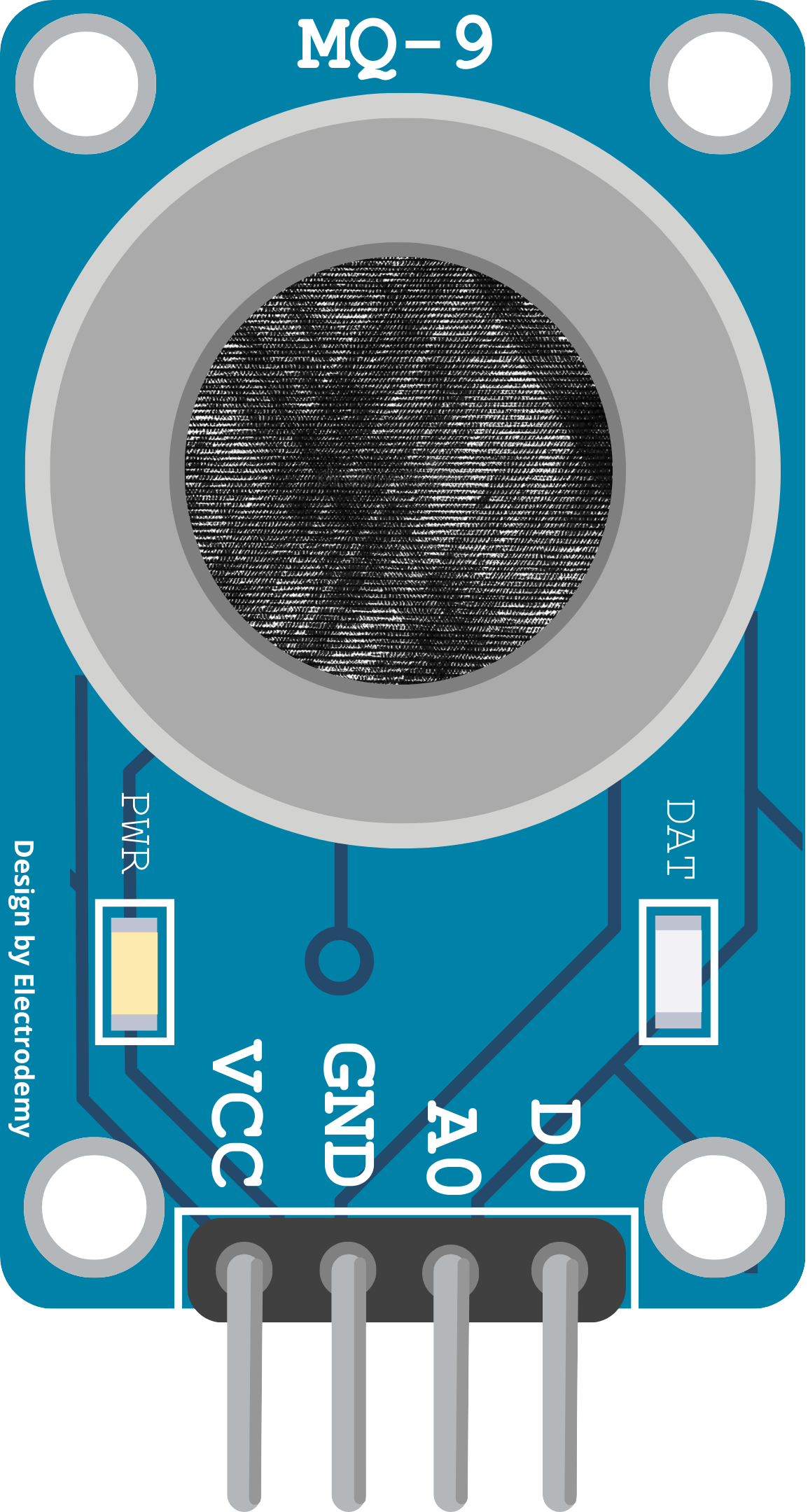
 Design with MQ-9 SENSOR COMBUSTIBLE GAS in Cirkit Designer
Design with MQ-9 SENSOR COMBUSTIBLE GAS in Cirkit DesignerIntroduction
The MQ-9 sensor module is a widely used electronic component for detecting the presence of combustible gases such as methane, propane, and hydrogen. It is based on a tin-oxide (SnO2) semiconductor which changes its resistance in the presence of certain gases. This sensor is commonly used in safety applications such as gas leak detectors in industrial and residential settings.
Explore Projects Built with MQ-9 SENSOR COMBUSTIBLE GAS
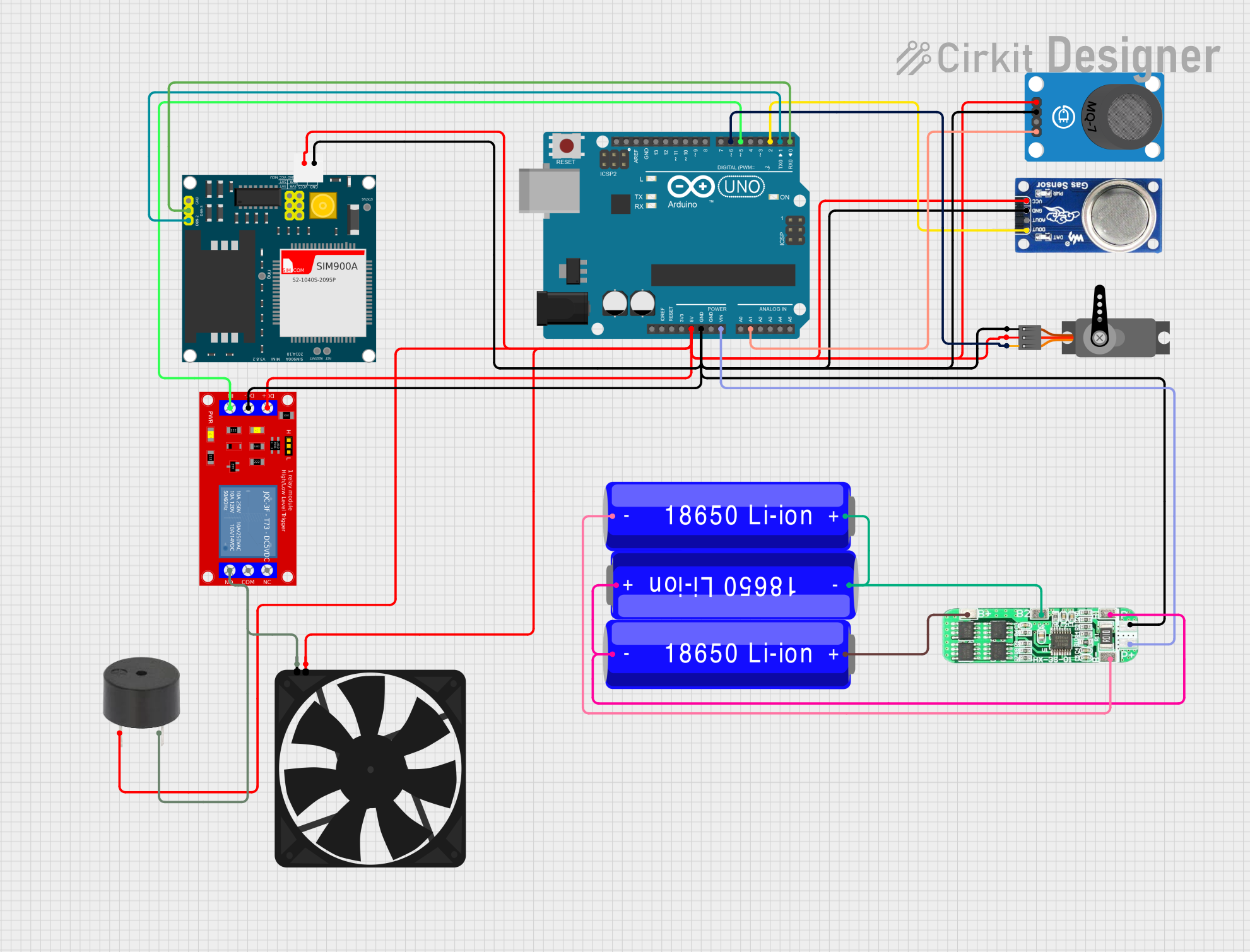
 Open Project in Cirkit Designer
Open Project in Cirkit Designer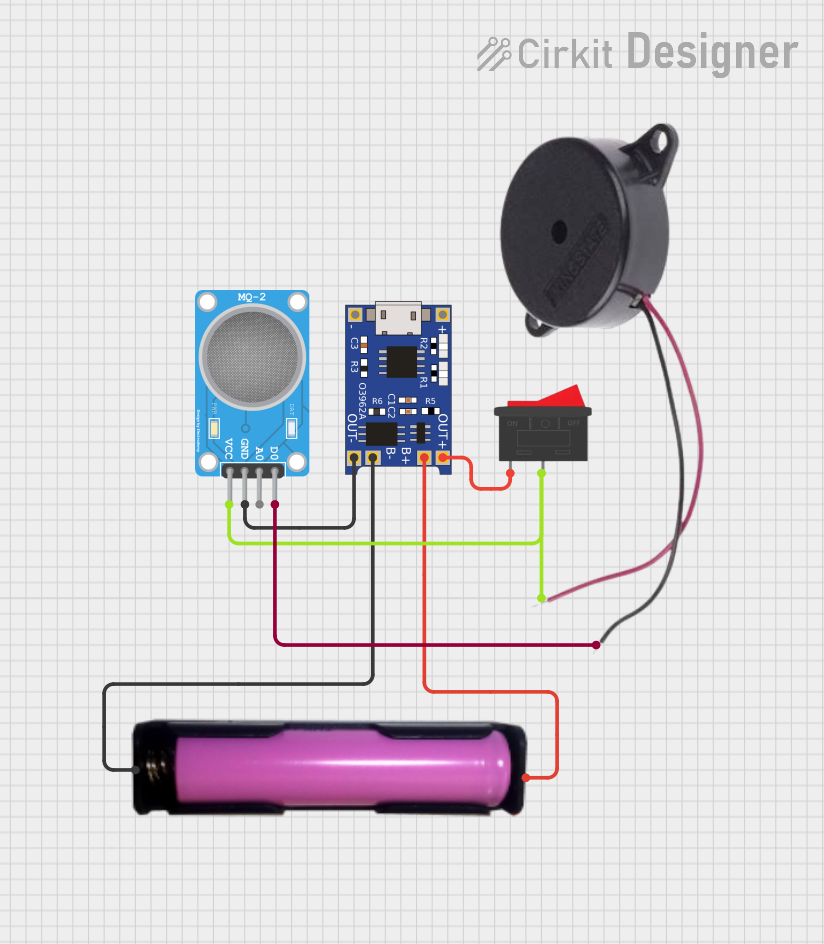
 Open Project in Cirkit Designer
Open Project in Cirkit Designer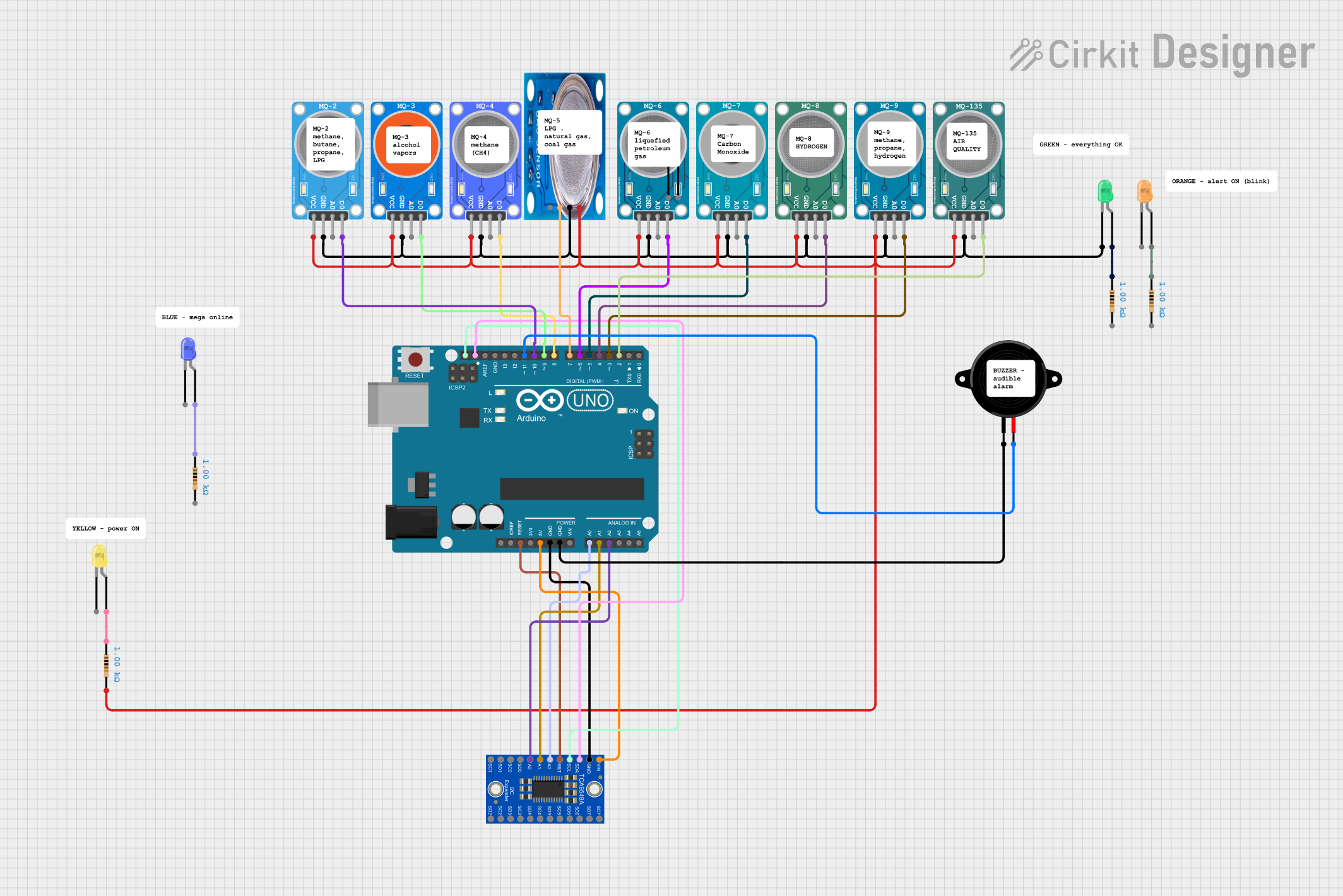
 Open Project in Cirkit Designer
Open Project in Cirkit Designer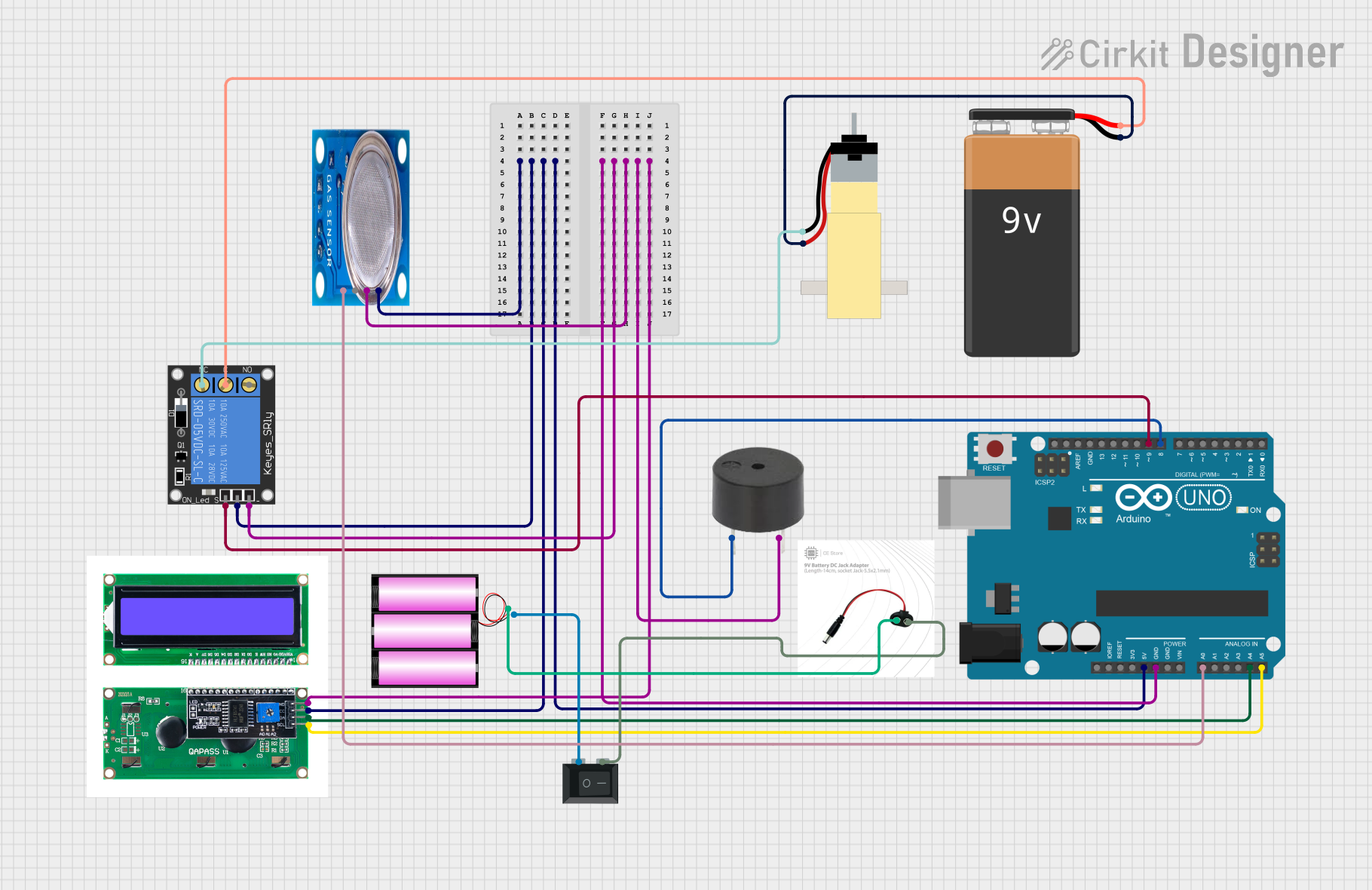
 Open Project in Cirkit Designer
Open Project in Cirkit DesignerExplore Projects Built with MQ-9 SENSOR COMBUSTIBLE GAS

 Open Project in Cirkit Designer
Open Project in Cirkit Designer
 Open Project in Cirkit Designer
Open Project in Cirkit Designer
 Open Project in Cirkit Designer
Open Project in Cirkit Designer
 Open Project in Cirkit Designer
Open Project in Cirkit DesignerCommon Applications
- Gas leak detection in homes and industries
- Portable gas detectors
- Air quality monitoring
- Early fire detection systems
Technical Specifications
Key Technical Details
- Sensor Type: Semiconductor
- Target Gases: Methane, Propane, Carbon Monoxide, Hydrogen
- Operating Voltage: 5V DC
- Heating Voltage: 5V ±0.1
- Load Resistance: Adjustable
- Heating Consumption: about 350mW
- Preheat Duration: 20 seconds
- Detection Range: 10 to 1000 ppm (parts per million)
Pin Configuration and Descriptions
| Pin Number | Pin Name | Description |
|---|---|---|
| 1 | VCC | Power supply (5V DC) |
| 2 | GND | Ground |
| 3 | DOUT | Digital output (TTL logic level) |
| 4 | AOUT | Analog output (Voltage proportional to gas concentration) |
Usage Instructions
Integration with a Circuit
- Power Supply: Connect the VCC pin to a 5V power supply and the GND pin to the ground.
- Signal Output: The MQ-9 provides both digital and analog outputs:
- Digital Output (DOUT): Connect to a digital input pin on a microcontroller. The digital output goes high when the gas concentration exceeds a certain threshold, which can be adjusted using the onboard potentiometer.
- Analog Output (AOUT): Connect to an analog input pin on a microcontroller to get a reading proportional to the gas concentration.
Important Considerations and Best Practices
- Calibration: The sensor requires calibration to ensure accurate readings. Expose the sensor to a known concentration of the target gas and adjust the onboard potentiometer until the desired output is achieved.
- Warm-Up Time: Allow the sensor to preheat for at least 20 seconds to stabilize the readings.
- Ventilation: Ensure proper ventilation around the sensor to allow gas diffusion.
- Avoid Extreme Conditions: Do not expose the sensor to extreme temperatures, humidity, or corrosive gases.
Example Code for Arduino UNO
// MQ-9 Sensor Example Code for Arduino UNO
int analogPin = A0; // Analog input pin connected to AOUT on the sensor
int digitalPin = 2; // Digital input pin connected to DOUT on the sensor
int sensorValue = 0; // Variable to store the sensor value
void setup() {
pinMode(digitalPin, INPUT); // Set the digital pin as input
Serial.begin(9600); // Start serial communication at 9600 baud rate
}
void loop() {
sensorValue = analogRead(analogPin); // Read the analog value from sensor
Serial.print("Gas concentration (analog): ");
Serial.println(sensorValue); // Print the analog reading
if (digitalRead(digitalPin) == HIGH) {
// Check if the digital output is high
Serial.println("Gas detected!");
} else {
Serial.println("No gas detected.");
}
delay(1000); // Wait for 1 second before the next loop
}
Troubleshooting and FAQs
Common Issues
- Inaccurate Readings: Ensure the sensor has been properly calibrated and has had sufficient warm-up time.
- No Output: Check the power supply and connections to the sensor. Ensure the sensor is not damaged.
- Fluctuating Readings: Stabilize the power supply and avoid exposing the sensor to drafts or rapid temperature changes.
Solutions and Tips
- Calibration: Perform calibration in a controlled environment with a known gas concentration.
- Sensor Cleaning: Use a soft brush to gently clean the sensor if dust or other particles have accumulated on it.
- Regular Testing: Periodically test the sensor with a known gas source to ensure it is functioning correctly.
FAQs
Q: How long does the MQ-9 sensor last? A: The lifespan of the sensor depends on the usage and environment, but it typically lasts for several years with proper maintenance.
Q: Can the MQ-9 sensor detect smoke? A: The MQ-9 is primarily designed for combustible gases and may not be the best choice for smoke detection. Smoke detectors typically use optical or ionization sensors.
Q: Is the MQ-9 sensor sensitive to alcohol vapors? A: The MQ-9 sensor can respond to a wide range of combustible gases, including some alcohol vapors, but it is not specifically designed for alcohol detection.